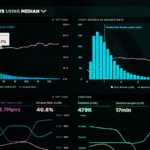Every day more and more people ask themselves what the difference is between an intermediate technician and a higher technician. It is clear that the future lies in vocational training, but doubts always arise as to which path to take.
Companies are increasingly looking for profiles with practical skills that can adapt to the needs of the market and at the same time stand out from the competition. For this reason, it is very important to know the advantages of studying Vocational Training, and it is important to know how the intermediate technician differs from the higher technician.
Entry requirements
In order to access the intermediate technician degree, a person must have the ESO diploma, while in order to access the higher technician degree, it is necessary to have successfully completed their baccalaureate studies.
If you have previously completed an intermediate or higher vocational training course, you have access to other equivalent training without the need to take previous tests, which means that anyone who has studied and completed an intermediate technician’s degree can do another of the same level to continue their specialisation, and the same applies to the higher technician’s degree.
In the case of not having any of the previous qualifications, there is another option, which is to pass the entrance exam for training cycles. In the case of the intermediate technician, you must be at least 17 years old and take the assessment. And in the case of the higher technician, you must be at least 19 years old.
Required competences
Regardless of the vocational training you want, you must pass a common test with the contents of Mathematics, Language and Literature, Foreign Language and official languages of the Autonomous Communities. In addition, there is a specific test that assesses knowledge in the professional field of the cycle you wish to study.
It is even possible for people over 25 years of age to enter Higher Vocational Training. As long as they pass the university entrance exam, but the same is not valid for those over 40 and 45 years of age.
Duration
The duration of the studies is between 1,200 and 2,000 teaching hours, which are divided into 2 years. Which also include the period of compulsory internships, which allow the student to get to know the world of work in the sector in which he/she is being trained. There is no exact timetable for the hours of practice. As these vary according to the training cycle, which means that in this sense the differences do not stand out.
One modality that is currently gaining ground is dual training. In which the traineeship can be carried out at the same time as the training cycle. This cuts the time taken and brings forward the date of graduation.
Qualification obtained
Studying and passing the Intermediate Level training cycle allows young people to obtain the Intermediate Technician qualification. And once they have finished their training they can choose to obtain a baccalaureate or continue their training to obtain a higher or university degree.
The intermediate technical qualifications that can be obtained belong to the following specialities: health emergencies, hairdressing and cosmetics, cookery and gastronomy, gardening and floristry, pharmacy, etc.
Students of a Higher Degree obtain the title of Higher Technician, and once they have the qualification, they can do a complementary specialisation at university. This degree can be obtained in different disciplines. Such as: social integration, international commerce, hairdressing styling and management, sales and commercial space management, oral hygiene, transport and logistics, etc.
Future projections
The professional opportunities or future prospects of a person qualified as an intermediate or advanced technician are in various areas. Such as: health, administration, aesthetics, textiles, agriculture, hotel and catering, transport, IT, commerce and marketing.
The economic sector with the highest number of applications for professional technicians is the technology sector. Thanks to the boost in commercial activity via the internet, especially after the pandemic and confinement episode that the world experienced.
With regard to the health sector, the demand for technical personnel at different levels and specialisations is very important, with the most sought-after profiles being those of nursing assistants and laboratory technicians.
Another sector that is not far behind is the industrial sector. Where there is a high level of demand for welders, operators, electromechanical and maintenance technicians.
As we can see, future projections are diverse, which is why vocational training is always recommended, as it provides a unique opportunity for personal and professional development, improving people’s quality of life.
¡Haz click para puntuar esta página!
Es muy importante para nosotros que puntúes nuestro trabajo para poder seguir mejorando. Tus opiniones ayudan al resto de estudiantes a encontrar nuestra página web.






